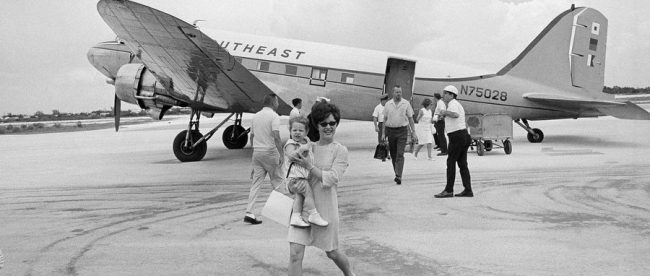The Never-Built Airport That Was Never Intended to be Used Anyway

On November 4, 1968, a National Airlines flight from New Orleans en route to Miami was hijacked and diverted by that hijacker to Cuba. It wasn’t an isolated incident — hardly, in fact. It was the twelfth time that year that an American flight had been hijacked by someone hoping to make his way to Cuba and one of more than three dozen in the 1960s alone. America had an epidemic on its hands — an epidemic of hijackings.
Hijackings of the era weren’t nearly as scary as they are in today’s world. In the 1960s and trickling into the 1970s, hijackings weren’t all that uncommon, and in general, the hijacker was simply looking for a way to make the politically difficult trip from the United States to Cuba, and for free. While the hijacker typically snuck a weapon on board and used it to threaten the lives and safety of the passengers and crew, that was often the end of the violence. The hijacker would demand that the pilot fly to Cuba under threat of force, but once the pilot complied, everyone onboard was, more or less, safe. Many times, the flight would depart Cuba a few hours later, en route to its original or originally-tended destination — with no one harmed in the process.
While these hijackings were generally bloodless, the U.S still wanted them to come to stop — just because no one died doesn’t mean you want to enable hijackers. But a solution was fleeting. In the summer of 1969, John H. Shaffer, the Federal Aviation Administrator, wrote an op-ed titled “What We Can Do To Stop Skyjacking“, an essay which outlined many of the ideas the FAA had considered — and why they had rejected them. One of the more curious potential solutions: a fake airport.
The theory: while the hijackers could demand that the pilots take the plane to Cuba, the hijackers were still at the whim of the pilots. A pilot could appear to comply but instead, fly over the Gulf of Mexico a bit and land virtually anywhere. The hijackers would have to use visible clues on the ground to confirm that the pilots went to Cuba and not, say, Miami. The FAA wondered if it could take advantage of this knowledge gap. So, per 99% Invisible, “[one] tactic that was seriously considered by the FAA was to build a phony Havana airport in south Florida. In this plan, the hijackers would believe they were landing in Havana but when they got off the plane, they’d be arrested by U.S. agents.”
The idea, though, never got off the ground. (Sorry.) As NPR stated, the FAA “concluded, perhaps correctly, that it would be way too expensive.” And Administrator Shaffer, in the above-linked op-ed, noted that “a fake airport would work once and that’s all.”
So, how did the skyjackings ultimately come to an end? Simply: the FAA added many of the security measures we’re used to today. Starting in 1973, metal detectors and baggage x-rays became common fixtures in American airports, and the number of hijacked airplanes slowed to a trickle.
From the Archives: Flipping the Bird: How one flight crew turned the tables — and everything else — on a would-be hijacker.
Related: “The Skies Belong to Us: Love and Terror in the Golden Age of Hijacking” by Brendan I. Koerner. 4.4 stars on 177 reviews.
